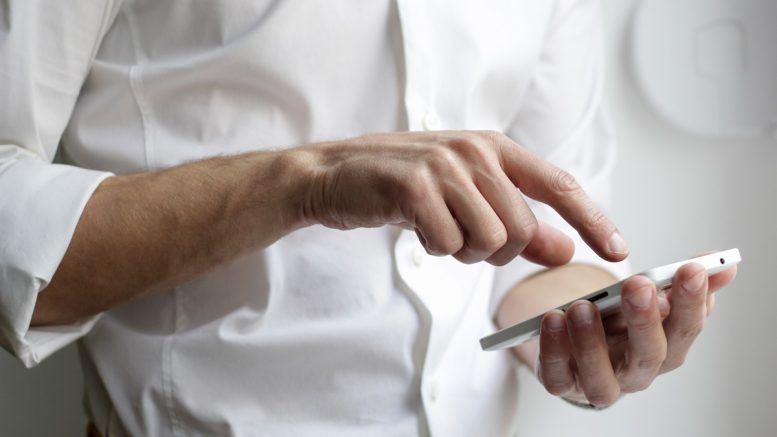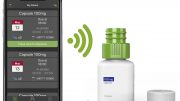AccessOne is a leading healthcare fintech company that is partnering with health systems to provide consumer centric mobile payment tools for the modern patient. We spoke to Joe Hall, VP of Business Development to find out how mobile pay opportunities can empower patients and help improve the revenue cycles of healthcare providers.
The percentage of bills owed by patients has risen exponentially. What challenges does this growing trend present?
The biggest challenge we’re seeing as healthcare expenses rise is that many consumers already lack the funds needed to pay medical bills that exceed a mere $250.
The recently passed No Surprises Act by Congress, which led the top three credit bureaus to agree to drop most medical debt from consumers’ credit reports, certainly helps consumers. But the reality is that many people who have high-deductible health plans can’t handle sudden, unexpected expenses. While they might know, intellectually, that their health plan’s deductible is $1,000 for an ER visit, it’s still not uncommon for a patient to experience sticker shock when they receive that $1,000 bill for an emergency operation.
Many of us can’t pay $1,000 without dipping into personal savings or using a personal credit card.
This creates a vicious cycle: If consumers are stressed or struggling to pay for urgent, critical care, they’re possibly more likely to put off preventive care such as screenings, or elective care like an operation, that is still essential to their health and wellbeing.
According to AccessOne’s most recent (2023) consumer survey, nearly one out of three 18- to 34-year-olds (31%) have gone as far as postponing needed care or procedures, and 40% of respondents ages 18-44 have delayed or opted not to fill a prescription to save money on healthcare expenses.
Unfortunately, we all know that when consumers drop preventive care and screenings, they’re more likely to need a higher level of care that’s more expensive down the line.
Paper statements are still a top way patients receive and pay their medical bills. What will it take to empower patients with mobile pay opportunities?
The reason paper statements are so popular is that many of us aren’t aware there is a better solution out there.
Healthcare organizations can do more to build awareness around mobile/digital pay opportunities. For example, they can market these services to patients when they visit — perhaps using incentives to drive enrollments. They can emphasize the simplicity of one-touch digital solutions, which enable patients to pay bills as easily as ordering household goods on Amazon.
Of course, this is contingent on organizations having a solution that is better than paper statements! An example of this would be a one-touch “text to pay” app that isn’t just a link to an online patient portal, which requires remembering a password and navigating through a myriad of menus.
Another thing healthcare organizations can do is combine digital payment solutions with other digital services on an app, such as scheduling apps.
It’s important to spend time thinking about what it would take to get patients to want to change their financial behaviors. Emphasizing convenience and speed is a good way to do this.
Research shows that consumers would pay bills faster when offered digital payment options. In your 16+ years of experience, can you share what you’ve seen in the market and/or with users of AccessOne?
It’s true that consumers pay bills much faster when offered digital payment options — especially millennial and Gen Z adults.
While 19% of all respondents to AccessOne’s most recent consumer survey said they prefer being contacted by secure text message when a healthcare balance is due, that percentage shot up when the individual was younger: Thirty percent of Gen Z respondents say they prefer being contacted by secure text message, as do 22% of millennials, for example. Only 9% of Gen Z respondents say they prefer paper statements, compared with 26% of Boomers.
The preference for digital over paper is only expected to grow, especially as technology evolves.
How important is it to create patient-centered, one-touch solutions that speak to consumer’s need for accessible, convenient options?
I believe there is a direct relationship between the evolution of one-touch solutions and consumer demand for better user experiences with digital payment. For example, in the 2010s, digital payments took the form of a patient sitting at their desktop and trying to remember their login and password credentials. The easier the payment experience gets, the more we’ll see Americans opting to pay healthcare bills or manage their accounts via their tablets or mobile phones.
True one-touch solutions are a key to getting consumers financially engaged, and the sooner we adopt these solutions on a broad scale, the better.
You mentioned digital communications. In what ways do digital communications about bill payments and reminders help the overall patient payment experience?
Reminders are a great thing — as long as they’re not dispatched too frequently, which can trigger alert fatigue. For instance, some organizations send a reminder text after seven days. Some send a reminder after three days. Often, these organizations wait a week to send a paper billing statement to give digital communications a chance to breathe. Leading organizations also look at the patient’s past payment history to determine how often to send a digital notification — and whether to send one at all. A patient who is not likely to pay, for example, might be a better candidate for a limited mailing of paper statements.
Alerting a patient that it’s time to make a payment and offering a link that a user can click on to make a one-touch payment can ease stress. The patient won’t worry about incurring penalties because their bill is buried in a stack of mail or in their email inbox’s spam folder.
What benefits are there for healthcare organizations when practices include mobile payment options?
The biggest benefits for healthcare organizations and revenue cycle teams are transparency and convenience, which lift administrative pressure off employees and make it easier to engage patients in their financial obligations for care. The right approach also will decrease phone calls to customer service, allowing team members to focus on more value-added work.
Patients who are blindsided by a $500 medical bill are more likely to feel some level of resentment about their overall healthcare experience. This includes their level of satisfaction with their actual care. On the other hand, those who know the cost of a procedure or treatment ahead of time (and can plan for it) tend to be the most satisfied.
When polled on their satisfaction with their healthcare providers’ payment options, 17% of survey respondents said they are dissatisfied with what they’re being offered — which shows there’s room for improvement. We believe that the move toward digital payments is the best and easiest way to strengthen the patient experience and ultimately financial engagement.
AccessOne, a leading healthcare fintech company, partners with health systems to provide consumer centric mobile pay tools for the modern patient. From pay-in-full to extended payment plans, the company’s mobile-native pathways make understanding and paying medical bills easy and affordable. Text-to-pay platform strips out the need to remember usernames, passwords or account numbers, creating a frictionless experience that drives more payments. Inclusive patient financing solution adds a Care Now, Pay Later component that accepts all patients, meaningfully lowering the financial barriers to receiving high-quality healthcare. AccessOne is reimagining payments for healthcare.





